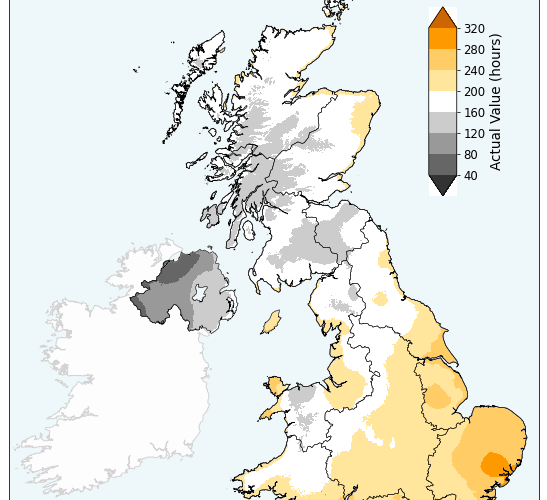The UK has been given an amber warning ahead of the heatwave that is due to cause temperatures to soar this Sunday, July 17 with a scorching 33C expected on Monday, July 18. With London, Southend - on - Sea and Portsmouth being the UK’s hot spots for sunshine, averaging around 320 hours of sunshine in the month of June alone, it’s set to be a scorcher in the South. Dog experts Kennel Store have broken down the biggest signs and symptoms of heat stroke in dogs and how to best help a dog potentially experiencing heat stroke.

"Heatstroke is a serious illness in which a dog begins to overheat and isn’t able to effectively lower its temperature. A dog’s normal body temperature is approximately 38.6°C, so if your dog begins to overheat they are in serious danger of becoming unwell. Left without treatment, heat stroke can lead to your dog experiencing seizures, organ failure, or even death. Overheating during exercise, extended time out in hot weather, and being trapped in a hot car can all be potential triggers for heat stroke.
All dogs are at risk of heat stroke, but flat-faced breeds in particular are at risk as they struggle to cool themselves down. This is due to some dogs struggling to pant effectively, leading to a much higher risk of sunstroke and heat exhaustion. It’s also important to keep a close eye on overweight, young, giant-breeds (this is any dog that exceeds 45kg) and elderly dogs, as they are all also at higher risk.
Signs of heatstroke in dogs include the following:
• Panting
• Drooling and/or foaming at the mouth
• Bright red gums
• Shaking
• Weakness
• Collapsing
• Confusion
• Vomiting and diarrhoea (this can sometimes contain blood)
• Seizures
• Death
If you think your dog is experiencing heat stroke, it’s important to act quickly.
• Keep your dog calm and still. Rapid, frantic movements may cause them to panic and further exhaust themselves, so have a cool and collected manner when taking care of your dog
• Move them indoors or to a shady area if this is not an option
• Give them a drink of cold water (not ice or icy water)
• Ensure that there’s plenty of cool air ventilating the area
• Put them on top of a wet towel to help cool them down
• Gently wet the top of their head, feet, ears, and fur (use cool water not icy)
• When they begin to show signs that they’re cooling down, proceed to pour cool water over their body
• Contact your vet and continue cooling your dog whilst travelling to the vet if possible
* Do not ever use ice or extremely cold water - this can cause shock and be detrimental to your dogs health
Treatment
Although you can give your dog plenty of water and move them to a well-ventilated, cool area; they need to be taken to a vet as soon as possible. Your vet will examine your dog and will try to reduce your dog’s temperature. This will be using fans, cool water and a fluid drip (if this is necessary). This has to be done by a vet so they are able to monitor your dog’s condition and medically intervene should your dog have complications. Your dog may also need medication if they begin experiencing seizures. If your vet is concerned about your dog’s vital organs, they may be required to take a blood test.
If your dog receives the appropriate treatment promptly, they will very likely make a full recovery. If, however, they become seriously unwell or they don’t receive the medical treatment required or it is delayed, they are at risk of suffering damage to their organs or even death.
It’s important to contact the vet as soon as your dog starts showing symptoms of heat stroke. The sooner treatment is administered, the higher chance your dog will make a better recovery.
Preventative measures you can take:
There are some preventative measures you can take to prevent your dog from experiencing heat stroke:
• Don’t walk your dog during the hottest part of the day
Walk them earlier in the morning or later in the evening when the temperature has dropped.
• Make sure your dog is always able to access shade and cold water
If you are at home, regularly encourage them to sit in the shade to ensure they’re not spending too much time in the sun. When out walking, take a travel bowel and fresh water so you’re able to hydrate your dog whilst walking.
• Check the pavement is safe to walk on before you set off
If you are not able to place the back of your hand on the pavement and comfortably leave it there for 7 seconds, this means the ground is too hot for your dog. Tarmac, sand, and artificial grass can become especially hot.
• Never leave your dog in a hot car
Leaving your dog in a hot car, even with the windows open is still extremely dangerous. Cars get very hot in the sun, and this can be fatal for dogs that have been left trapped inside.
• Consider having your dogs coat clipped shorter in warmer months
If your dog has a particularly heavy coat, it’s worth thinking about having their coat cut down shorter to help keep them cool
If you are having concerns about your dog during warmer weather, contact your vet and they will be able to advise and suggest the best course of action moving forward.




